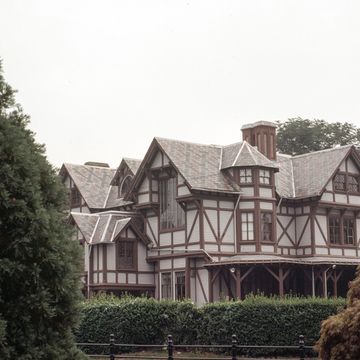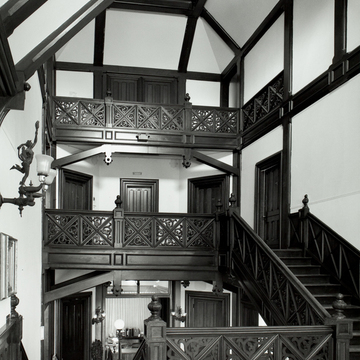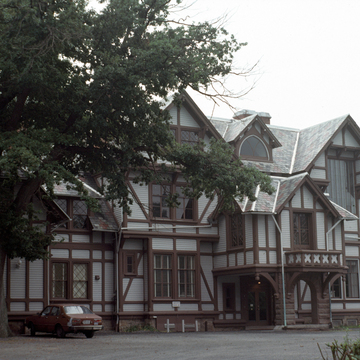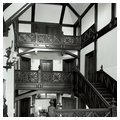Across Old Beach Road from Redwood Library stands the first major Newport commission of Richard Morris Hunt, the architect ultimately responsible for the city's grandest palaces. It was a summer house in what was then known as Modern Gothic (more recently designated as Stick Style) for J. N. A. Griswold, a wealthy New York businessman whom Hunt had met in Europe.
The main block of the house is covered in a skeleton of half timbering, overhanging bracketed eaves, and shaded wrap-around porches whose roofs are supported by exposed posts and diagonal braces, mostly nonstructural and rather more picturesque than rational in intent. Hunt here attempted to reconcile the more rationalist aspects of his recent training in Paris with a romantic response to such European and American vernacular buildings as farmhouses, resort cottages, Alpine lodges, and rustic pavilions. The design also recalls earlier experiments with decorative rustic framing in Newport houses of the previous decade by Leopold Eidlitz and Richard Upjohn. As designed, the house appeared as a more vertical, compact mass than is now the case, but after the Art Association of Newport (later the Newport Art Museum) took over the property in
Inside, the entrance hall opens generously in three directions on either side to a broad stair, a dining room, and a parlor and straight ahead to a conservatory. The interior retains a sense of the spatial effect and decorative woodwork of the original house and, with the big porch immediately at hand, suggests the genteel yet informal environment which Hunt created for summer living.
Also on the grounds of the museum is the smaller Cushing Memorial Gallery, with its ornate ring of polished marble columns supporting a low dome over the main entry and projecting from the otherwise unadorned severity of the main block. Dedicated to the memory of Howard G. Cushing, a local society portrait painter and muralist of the early twentieth century, it was intended as the entryway to a larger museum complex, which was eventually completed in 1990 under the design of Peter Roudebush and Associates of Cambridge, Massachusetts. This addition, which stretches east from the original Cushing block and replicates much of its classical detailing, has added gallery and other functional space for the museum's needs.























